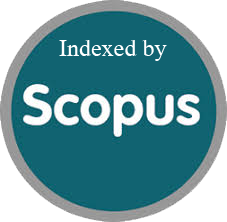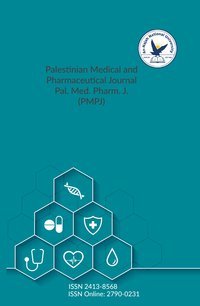Mirtazapine Loaded Solid and Liquid Self-Emulsifying Delivery System and Characterization with Neural Network Start (NNS) Modelling
Authors:
Article info
2024-03-29
2024-07-27
2024-08-16
71 - 80
Keywords
- Stability
- Surface adsorption
- Flow properties
- Miratazepine
- In vitro
Abstract
Background: Mirtazapine (MTZ) is delivered via a self-emulsifying system (SEDDS) to treat depression by acting as an antagonist at multiple serotonin and adrenergic receptors. Aim: The goal of SEDDS formulation preparation 2-level factorial design using a selected combination of three components such as X1- surfactant and co-solvent (Smix) (Tween80&PEG400) at upper level 1:5 and lower level 1:1 ratio, X2- stirrer speed (rpm), X3- stirring time (min), and to evaluate the produced SEDDS. Materials and methods: The two-level factorial design with Design Expert used in formulation assessed physicochemical features such as pseudo-ternary phase design, emulsification, phase separation, pH, percent transmittance, permeability studies, ex vivo drug release, liquid (LSDDS) to solid SEDDS conversion, flow properties, entrapment efficiency, cloud point, drug excipient compatibility studies, stability studies, and optimisation. Results: The Neural Network Start (NNS) was used in the optimisation, feed-forward back propagation Levenberg-Marqardt Algorithm, and performance was measured using the mean square error (MSE). NNS with ten units of layer size provided a better fit for all responses (R2 = 0.99996, 0.999, and 0.98 for T100, T50, and PD 20) than multiple linear regression (MLR) (0.9517, 0.9998, and 0.7942 for T100 (time required for 100% drug release), T50 (time required for 50% drug release), and PD 20 (percentage drug release 20 minutes), respectively). Conclusion: The dissolution of drug release in LSEDDS and SSEDDD is substantially better than in pure MTZ. The formulations LSEEDS and SSEDDS demonstrated appropriate stability for 90 days according to ICH stability quality requirements, including emulsification time, phase separation, angle of repose, and drug content. The SEDDS were successfully designed to increase the oral bioavailability of MTZ, allowing for larger therapeutic application.
Challa, T., Akula, K., Arasavilli, K., Baratam, M., Guntamukkala, J., Malluri, N., Patnana, M., Chintala, T., & C, R. G. (2024). Mirtazapine Loaded Solid and Liquid Self-Emulsifying Delivery System and Characterization with Neural Network Start (NNS) Modelling. Palestinian Medical and Pharmaceutical Journal, 10(1), 71–80. https://doi.org/10.59049/2790-0231.10.1.2277
[1]T. Challa et al., “Mirtazapine Loaded Solid and Liquid Self-Emulsifying Delivery System and Characterization with Neural Network Start (NNS) Modelling,” Palestinian Medical and Pharmaceutical Journal, vol. 10, no. 1, pp. 71–80, Aug. 2024, doi: 10.59049/2790-0231.10.1.2277.
Challa, TarakaRamarao, et al. “Mirtazapine Loaded Solid and Liquid Self-Emulsifying Delivery System and Characterization with Neural Network Start (NNS) Modelling.” Palestinian Medical and Pharmaceutical Journal, vol. 10, no. 1, Aug. 2024, pp. 71–80. Crossref, https://doi.org/10.59049/2790-0231.10.1.2277.
1.Challa T, Akula K, Arasavilli K, Baratam M, Guntamukkala J, Malluri N, et al. Mirtazapine Loaded Solid and Liquid Self-Emulsifying Delivery System and Characterization with Neural Network Start (NNS) Modelling. Palestinian Medical and Pharmaceutical Journal [Internet]. 2024 Aug;10(1):71–80. Available from: http://dx.doi.org/10.59049/2790-0231.10.1.2277
Challa, TarakaRamarao, Krishnaven Akula, Kiranmai Arasavilli, Manisha Baratam, Jayasri Guntamukkala, Narendra Malluri, Manikantha Patnana, Tulasi Chintala, and Raghunadha Gupta C. “Mirtazapine Loaded Solid and Liquid Self-Emulsifying Delivery System and Characterization with Neural Network Start (NNS) Modelling.” Palestinian Medical and Pharmaceutical Journal 10, no. 1 (August 2024): 71–80. https://doi.org/10.59049/2790-0231.10.1.2277.
Mirtazapine Loaded Solid and Liquid Self-Emulsifying Delivery System and Characterization with Neural Network Start (NNS) Modelling
المؤلفون:
معلومات المقال
2024-03-29
2024-07-27
2024-08-16
71 - 80
الكلمات الإفتتاحية
- Stability
- Surface adsorption
- Flow properties
- Miratazepine
- In vitro
الملخص
Background: Mirtazapine (MTZ) is delivered via a self-emulsifying system (SEDDS) to treat depression by acting as an antagonist at multiple serotonin and adrenergic receptors. Aim: The goal of SEDDS formulation preparation 2-level factorial design using a selected combination of three components such as X1- surfactant and co-solvent (Smix) (Tween80&PEG400) at upper level 1:5 and lower level 1:1 ratio, X2- stirrer speed (rpm), X3- stirring time (min), and to evaluate the produced SEDDS. Materials and methods: The two-level factorial design with Design Expert used in formulation assessed physicochemical features such as pseudo-ternary phase design, emulsification, phase separation, pH, percent transmittance, permeability studies, ex vivo drug release, liquid (LSDDS) to solid SEDDS conversion, flow properties, entrapment efficiency, cloud point, drug excipient compatibility studies, stability studies, and optimisation. Results: The Neural Network Start (NNS) was used in the optimisation, feed-forward back propagation Levenberg-Marqardt Algorithm, and performance was measured using the mean square error (MSE). NNS with ten units of layer size provided a better fit for all responses (R2 = 0.99996, 0.999, and 0.98 for T100, T50, and PD 20) than multiple linear regression (MLR) (0.9517, 0.9998, and 0.7942 for T100 (time required for 100% drug release), T50 (time required for 50% drug release), and PD 20 (percentage drug release 20 minutes), respectively). Conclusion: The dissolution of drug release in LSEDDS and SSEDDD is substantially better than in pure MTZ. The formulations LSEEDS and SSEDDS demonstrated appropriate stability for 90 days according to ICH stability quality requirements, including emulsification time, phase separation, angle of repose, and drug content. The SEDDS were successfully designed to increase the oral bioavailability of MTZ, allowing for larger therapeutic application.
Challa, T., Akula, K., Arasavilli, K., Baratam, M., Guntamukkala, J., Malluri, N., Patnana, M., Chintala, T., & C, R. G. (2024). Mirtazapine Loaded Solid and Liquid Self-Emulsifying Delivery System and Characterization with Neural Network Start (NNS) Modelling. Palestinian Medical and Pharmaceutical Journal, 10(1), 71–80. https://doi.org/10.59049/2790-0231.10.1.2277
[1]T. Challa et al., “Mirtazapine Loaded Solid and Liquid Self-Emulsifying Delivery System and Characterization with Neural Network Start (NNS) Modelling,” Palestinian Medical and Pharmaceutical Journal, vol. 10, no. 1, pp. 71–80, Aug. 2024, doi: 10.59049/2790-0231.10.1.2277.
Challa, TarakaRamarao, et al. “Mirtazapine Loaded Solid and Liquid Self-Emulsifying Delivery System and Characterization with Neural Network Start (NNS) Modelling.” Palestinian Medical and Pharmaceutical Journal, vol. 10, no. 1, Aug. 2024, pp. 71–80. Crossref, https://doi.org/10.59049/2790-0231.10.1.2277.
1.Challa T, Akula K, Arasavilli K, Baratam M, Guntamukkala J, Malluri N, et al. Mirtazapine Loaded Solid and Liquid Self-Emulsifying Delivery System and Characterization with Neural Network Start (NNS) Modelling. Palestinian Medical and Pharmaceutical Journal [Internet]. 2024 Aug;10(1):71–80. Available from: http://dx.doi.org/10.59049/2790-0231.10.1.2277
Challa, TarakaRamarao, Krishnaven Akula, Kiranmai Arasavilli, Manisha Baratam, Jayasri Guntamukkala, Narendra Malluri, Manikantha Patnana, Tulasi Chintala, and Raghunadha Gupta C. “Mirtazapine Loaded Solid and Liquid Self-Emulsifying Delivery System and Characterization with Neural Network Start (NNS) Modelling.” Palestinian Medical and Pharmaceutical Journal 10, no. 1 (August 2024): 71–80. https://doi.org/10.59049/2790-0231.10.1.2277.

Since 2022
Cite Score (Scopus): 0.8
Time to First Decision: 3 Days
Submission to Acceptance: 45 Days
Acceptance to Publication: 64 Days
Acceptance Rate: 17%
Why should you
Publish With Us?
An-Najah National University
Nablus, Palestine
Nablus, Palestine
- P.O. Box
- 7, 707
- Fax
- (970)(9)2345982
- Tel.
- (970)(9)2345560
- (970)(9)2345113/5/6/7-Ext. 2628
- [email protected]
- EIC
- Prof. Waleed Sweileh
The Palestinian Medical and Pharmaceutical Journal (Pal. Med. Pharm. J.) © 2024 by An-Najah University, Nablus, Palestine is licensed under CC BY-NC 4.0
News and Views
